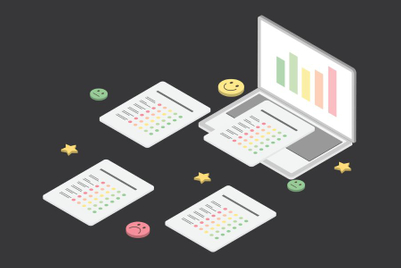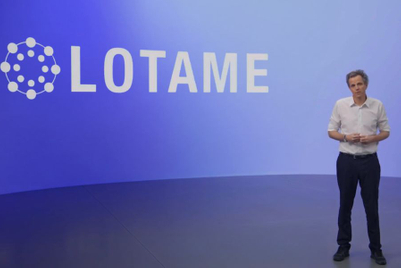
The Trade Desk has launched a new trading platform that, among other features, will allow clients to onboard first-party data to inform media-buying strategies, replacing the need for a separate customer-data platform (CDP) or data-management platform (DMP).
First-party data in the form of email addresses will be converted into Unified ID 2.0's (UID2s), allowing The Trade Desk to build the UID2 ecosystem while providing clients with identity-based targeting.
The incorporation of customer data is one of the biggest enhancements of the new user interface, Solimar.
Solimar has been two years in the making and is "by far our biggest iteration to date", Mitch Waters, The Trade Desk's SVP of Southeast Asia, India and ANZ, told Campaign Asia-Pacific in a briefing call.
Alongside easy onboarding of first-party data, The Trade Desk had three key areas of focus for Solimar: improving the user interface, putting goals at the forefront of campaigns, and incorporating better planning and optimisations.
Campaign optimisation is powered by an artificial intelligence tool called Koa, which makes suggestions throughout the campaign build and while a campaign is live. This, alongside what the company says is a more streamlined and intuitive design of the platform, aims to take the grunt work of setting up campaigns and line items away from traders so they can focus more on insights, Waters explained. The platform has been designed with both agency and in-house teams in mind.
Since The Trade Desk is the biggest independent adtech company by market value, its platform investments are useful barometers of current advertising priorities.
Behind the build
The name Solimar is derived from the Spanish 'sol y mar', which means sun and sea. For The Trade Desk, Solimar represents the "perfect moment" when the sun meets the sea during a sunset or sunrise.
"This is what our release represents—it's the perfect moment in our industry as we head into a new age of advertising, one that is digital and data-driven and also moves beyond the complexities of our ecosystems around siloed data and single-channel strategies," trading specialist Dawn Chan explained in the briefing call. "Instead, we want to focus on maximising the advertisers' ability to do what's right for their business, as well as what is right for consumers."
Today’s (July 7) release comes just three years after The Trade Desk's last user-interface launch, Megagon.
“Essentially we had to build the plane while flying it [since] we had our old platform to stand up," explained Waters. "We have the vision of what we want to achieve...then what we do is work backwards in terms of resourcing and everything else we have to do on an everyday basis. We release product every week, and our team have requests every other week that we need to prioritise. It was about working together to keep the pace of everyday innovation, as well as building something scalable and meaningful."
The Trade Desk conducted two months of private beta testing with a select group of its major clients to incorporate client feedback into the launch.
The platform
To encourage better buying decisions, the Solimar platform opens with a ‘Live flight summary’ that shows what The Trade Desk believes is the most important information to drive growth, including:
- Objectives: Does the client have the right marketing mix?
- Pacing: Is the client delivering on track and forecasted to spend in full?
- Channels: Is the channel mix appropriate or is there room for diversification across emerging channels like DOOH?
- Data: Is the client using data effectively? This segment provides a snapshot of how many campaigns are using first-party, third-party and no data.
New campaign creation tools include the option for advertisers to measure against more than one KPI, labelled as primary, secondary and tertiary.
Campaign insights such as reach and frequency, measured by Adbrain, can be viewed on a household, person or unique-ID level.
A seller insights dashboard shows how an advertiser is spending across its top 25 publisher partners across metrics such as auction type, device type, ad environment, supply vendor, ads.txt and ad format.
A forecasting tool allows planners to toggle targeting settings to see how changes may impact the reach and frequency of a campaign. Waters views this tool as especially relevant within APAC due to the fragmentation of platforms across markets.
"One area where we have seen a lot of demand is within OTT. If you are buying individually, you don’t have complete view of what an OTT opportunity might look like. Being able to see holistically what an OTT opportunity is across major partners within Indonesia, for example, we start getting to a place where it's a lot easier to activate against it," he said.
Elsewhere, a report section contains a comprehensive menu of report templates, from conversion optimisation to frequency distribution to tracking tags, as well as measurement integrations with the likes of Oracle, Foursquare and more. An integration with Lucid enables clients to conduct brand lift studies within the platform. There will also be a range of local partner integrations; within the APAC region this includes a recently announced offline attribution partnership in Australia with Unpacked by Flybuys.
Koa
The Koa AI engine powers Solimar's performance-enhancing features. For example, when a client creates a new campaign, Koa will suggest KPIs based on the client’s stated objectives, cross-device vendors, a budget split by channels, and strategies such as retargeting, lookalike audiences or contextual.
Meanwhile, the Koa Identity Alliance is a cross-device graph that incorporates leading and emerging ID solutions such as LiveRamp IdentityLink, Oracle Cross Device, Tapad Device Graph, Adbrain Device Graph, removing the "guesswork" about identity resolution for clients.
The Trade Desk wanted to make Koa's decisions transparent, so clients are able to click through to see which CPMs, strategies, data segments the AI has selected, and amend or ignore Koa’s recommendations as they see fit.
First-party data
As previously discussed, incorporating the utility of a client’s first-party data or third-party audiences to inform their media buying is one of Solimar's biggest innovations.
Within the campaign setup, clients can specify their target customer in the form of first-party or third-party data, which will serve as a seed audience that Koa will model from to provide recommendations.
A data section provides multiple options for brands to upload first-party data including pixels, app data, and IP addresses directly into the platform, or import data from a third-party DMP or CDP.
If a client chooses to onboard CRM data in the form of email addresses, these will automatically be converted into UID2s. Once converted, the platform will scan the UID2s to evaluate how many are ‘active UID2s’, which refers to how many of these users have been active across the programmatic universe in the past week.
If the client chooses to act on those UID2s, they will be passed into the programmatic ecosystem to match with the publisher side, building the UID2 ecosystem in tandem.
For advertisers that don't have first-party data, which is "prevalent in the APAC region", Chan acknowledged, an audiences tab allows advertisers to tap into a marketplace of second- and third-party data so they can still use interest segments, purchase intent segments and demographics.






.jpg&h=334&w=500&q=100&v=20250320&c=1)
.jpg&h=334&w=500&q=100&v=20250320&c=1)



.jpg&h=334&w=500&q=100&v=20250320&c=1)
.png&h=334&w=500&q=100&v=20250320&c=1)








